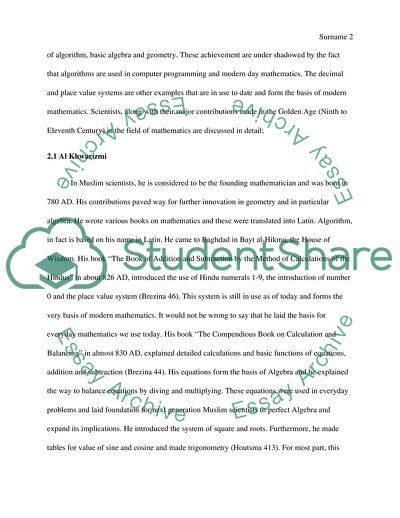Cite this document
(The Golden Age Presented by the Islamic Physical Science Essay, n.d.)
The Golden Age Presented by the Islamic Physical Science Essay. https://studentshare.org/history/1770680-islamic-physical-science-in-the-golden-age
The Golden Age Presented by the Islamic Physical Science Essay. https://studentshare.org/history/1770680-islamic-physical-science-in-the-golden-age
(The Golden Age Presented by the Islamic Physical Science Essay)
The Golden Age Presented by the Islamic Physical Science Essay. https://studentshare.org/history/1770680-islamic-physical-science-in-the-golden-age.
The Golden Age Presented by the Islamic Physical Science Essay. https://studentshare.org/history/1770680-islamic-physical-science-in-the-golden-age.
“The Golden Age Presented by the Islamic Physical Science Essay”. https://studentshare.org/history/1770680-islamic-physical-science-in-the-golden-age.


